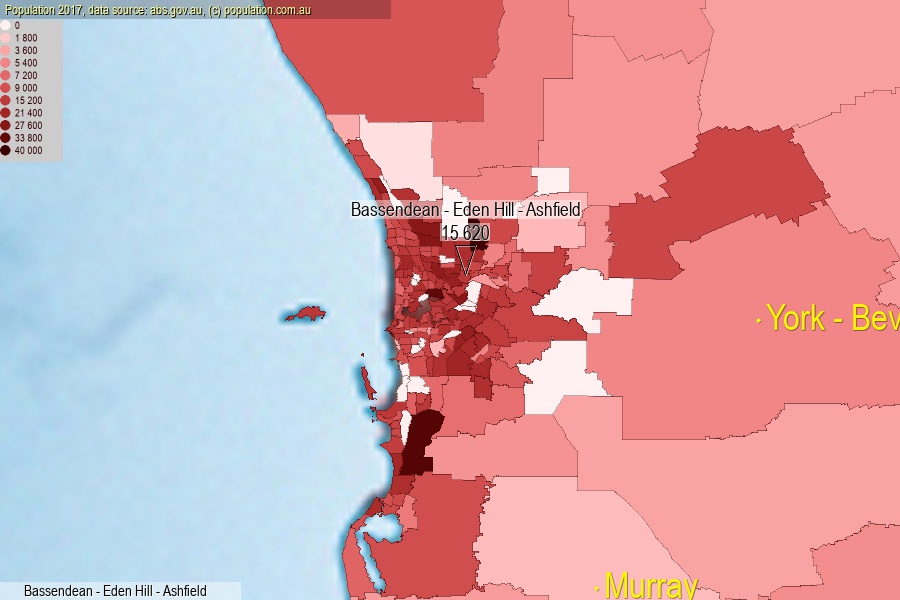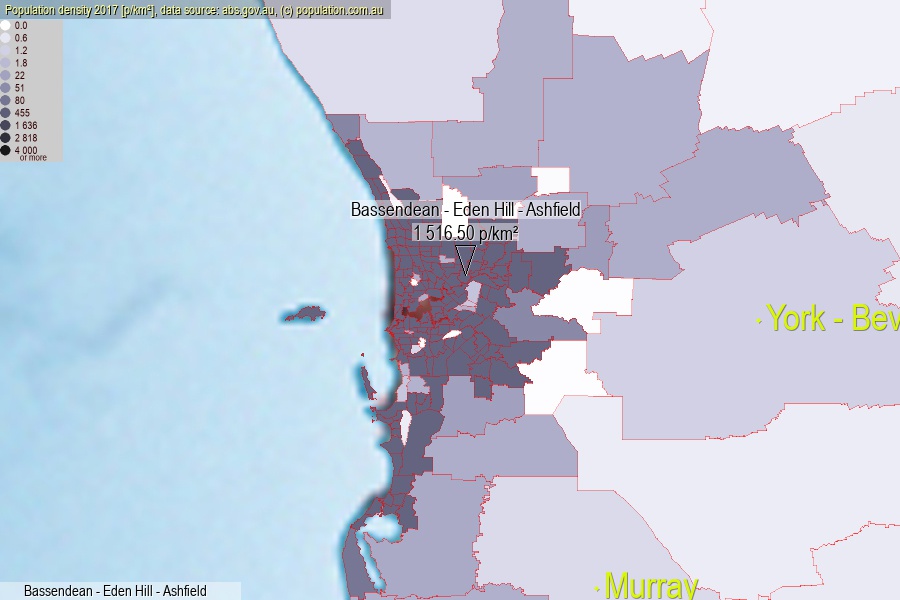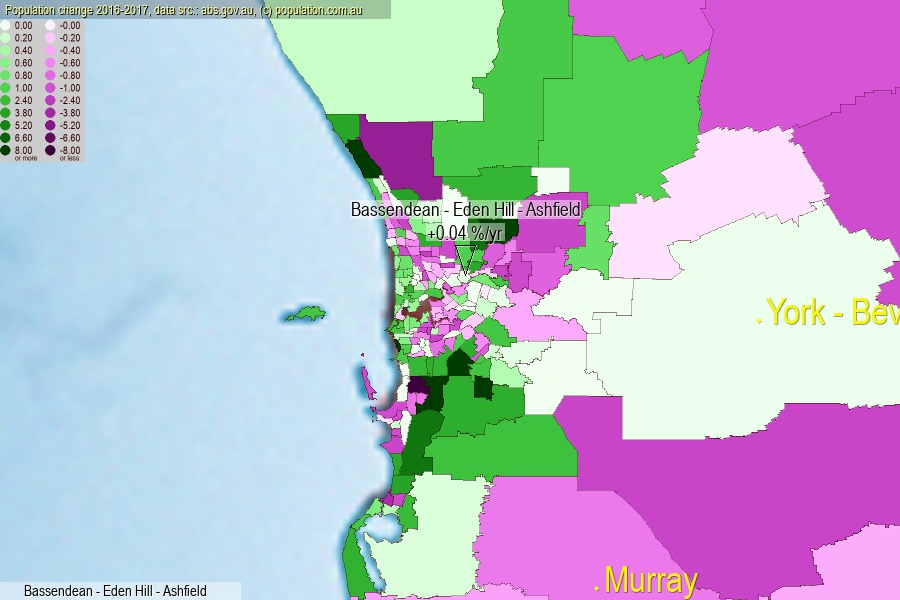 population.com.au
population.com.auLast official estimated population of Bassendean - Eden Hill - Ashfield (as Statistical Area Level 2) was 15 620 people (on 2017-06-30)[2]. This was 0.06% of total Australian population and 0.603% of WA population. Area of Bassendean - Eden Hill - Ashfield is 10.30 km², in this year population density was 1 516.50 p/km² . If population growth rate would be same as in period 2016-2017 (+0.04%/yr), Bassendean - Eden Hill - Ashfield population in 2025 would be 15 676. [0]



Click to enlarge. Bassendean - Eden Hill - Ashfield is located in the center of the images.
Population [people], population density [p./km²] and population change [%/year] [2]
View borders » (new window) [4]
[1991-1992] +0.07 %/Yr.
[1992-1993] -0.79 %/Yr.
[1993-1994] +0.04 %/Yr.
[1994-1995] +0.22 %/Yr.
[1995-1996] +0.52 %/Yr.
[1996-1997] +0.40 %/Yr.
[1997-1998] +0.22 %/Yr.
[1998-1999] +0.11 %/Yr.
[1999-2000] -0.07 %/Yr.
[2000-2001] +0.58 %/Yr.
[2001-2002] +0.78 %/Yr.
[2002-2003] -0.95 %/Yr.
[2003-2004] -0.24 %/Yr.
[2004-2005] -0.38 %/Yr.
[2005-2006] -0.34 %/Yr.
[2006-2007] +1.46 %/Yr.
[2007-2008] +1.84 %/Yr.
[2008-2009] +1.87 %/Yr.
[2009-2010] +1.85 %/Yr.
[2010-2011] +1.89 %/Yr.
[2011-2012] +2.29 %/Yr.
[2012-2013] +1.94 %/Yr.
[2013-2014] +1.11 %/Yr.
[2014-2015] -1.01 %/Yr.
[2015-2016] -1.45 %/Yr.
[2016-2017] +0.04 %/Yr.
[0] Calculated with linear interpolation from officially estimated population
[1] Read more about SA2 and Australian Statistical Geography Standard (ASGS) on abs.gov.au
[2] Population data from Australian Bureau of Statistics (Population and density: 2017; change: 2016-2017)
[3] Digital Boundaries: Australian Statistical Geography Standard (ASGS) 2016.
[4] Border coordinates are simplifyed using Ramer-Douglas-Peucker algorithm.